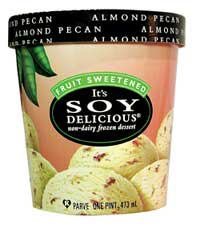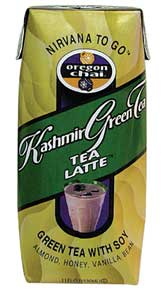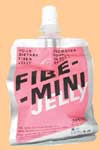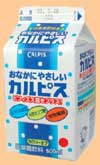
Sweet Success
Despite its broad use as a traditional food ingredient, sugar has undesirable attributes such as its role in dental caries and its calorie content, among others. As such, alternatives to the sweetener have been developed to deliver many of sugar's functionalities, without its negative characteristics.
Some sugar-replacement efforts have focused on high-potency sweeteners. Essentially delivering little more than sweetness, these do not offer sugar's textural or bulking properties—or its intrinsic nutritional benefit, calories. Recent developments, however, offer ingredients with discernible benefits beyond simply eliminating sugar from the diet.

Rice of Passage
Brown rice syrup can be found in recent product introductions such as Barbara's Bakery's (Petaluma, Calif.) French Toast flavored Cereal & Milk Bars or Fantastic Foods' (also in Petaluma) Jamaican Rice & Beans Soup. The ingredient also shows up in the almond pecan variety of Soy Delicious frozen dessert from Turtle Mountain Inc. (Junction City, Ore.) and in Oregon Chai's (Portland, Ore.) Kashmir Green Tea. The original soy dream ingredient includes filtered water, organic soy beans, rice syrup and sea salt.
Brown rice syrup is derived by culturing rice with enzymes to break down the starches, then straining off the liquid and cooking it until reaching the desired consistency. One supplier notes that its product has a shelflife of about a year.

Feel the Intensity
Another sugar replacer, lactitol, also can be blended with more-intense sweeteners. In Hershey's Sugar Free Chocolate with Almonds, Hershey Foods Corp. (Hershey, Pa.) adds lactitol to polydextrose and sucralose. The lactitol ingredient also warrants a special note on the package that is helpful for diabetics: “Lactitol (a sugar substitute) is a slowly metabolized carbohydrate that generally causes only a small rise in blood glucose levels.”
Offering physical properties somewhat similar to those of sucrose, lactitol can substitute for sucrose in a number of applications, thanks to its mild sweetness and lack of aftertaste. Furthermore, the inclusion of lactitol can offer a number of health benefits, most notably a reduction in calories.

The Ace of the Staff
Discovered in 1967 and approved by the FDA in 1998 for use in beverages, acesulfame potassium (a.k.a., ace-k) is some 200 times sweeter than sugar and took the carbonated soda market by storm when PepsiCo (Purchase, N.Y.) included it in Pepsi One in 1998. Usually mixed with other low-calorie sweeteners to enhance the product's flavor profile, ace-k also may be found in Calypso Ice LLC's (Denver) Cabana Ice beverages, which also contain sucralose.
Ace-k is approved for use in more than just beverages, however. In the U.S., it can be found in such products as chewing gum, dry beverage mixes, dry dessert mixes, tabletop sweeteners, confections, baked goods and dairy products.

Out of Neutral
Similarly, as its healthful properties become more widely known, polydextrose has seen its use widen. Recent definitions by the National Academy of Sciences and the American Association of Cereal Chemists recognize the reduced-calorie substitute as a fiber. Traditionally, it has been used as a bulking agent in conjunction with high-intensity sweeteners.Polydextrose is highly soluble and has a neutral taste. It has been said the ingredient can help minimize the off-notes contributed by high-intensity sweeteners, soy, vitamins, minerals and other nutritional supplements.
In addition, polydextrose has prebiotic effects that help promote the growth of beneficial intestinal bacteria, and its fermentation in the large intestine yields short-chain fatty acids, including butyrate. Companies targeting diabetics also have benefited from polydextrose, as the ingredient is metabolized independently.
Alcohols Anonymous
Sugar alcohols can be found in hard candies, pressed mints and chewing gum marketed as “sugar-free” and, in many instances, reduced in calories. Maltitol is one such bulk sweetener and is about 90% as sweet as sugar. Maltitol is non-cariogenic and is significantly reduced in calories.
Maltitol can be used without other sweeteners, although it does exhibit a slight cooling effect in the mouth compared with most other polyols. The sweetener can be found in the low-carb version of Russell Stover (Kansas City, Mo.) candies, where it is listed as part of the chocolate-flavored coating. Beyond sugar-free and low-carb items, maltitol may also help to replace fat, as it imparts a creamy texture to food.
The Forest for the Trehalose
Recently commercialized in a number of important markets, trehalose is found naturally in many foods, such as mushrooms and shellfish. About 45% as sweet as sucrose, trehalose is clear in solution and will not distort the natural color of a product. In fact, it has been reported to stabilize desired colors in some systems. The mild sweetness of trehalose actually can enhance other flavors.Tagatose, a naturally occurring, reduced-calorie bulking agent, is nearly as sweet as sucrose. Baked goods products with tagatose tend to brown more readily than sucrose-laden counterparts. As a prebiotic, some 80% to 85% of the tagatose passes into the colon, where it undergoes fermentation. There, tagatose stimulates the growth of lactic acid bacteria and lacto-bacilli, while also promoting butyrate production in the colon. As such, tagatose helps maintain a healthy intestinal tract. Its benefits can be extended to people with diabetes, plus it does not cause cavities.
Still relatively new to the industry, tagatose has been the subject of much publicity. PepsiCo (Purchase, N.Y.) reportedly has been exploring the use of the sweetener in several products, including beverages. The company claims tagatose improves the flavor and mouthfeel of diet sodas when added to the high-intensity sweeteners now in use.
One such attempt has seen tagatose incorporated into a new Diet Pepsi-flavored Slurpee at 7-Eleven stores. This marks the first commercial introduction of the low-calorie, full-bulk sweetener. Tagatose is used as a flavor enhancer, to improve the taste and mouthfeel of high-intensity sweeteners used in the product.
Website Resources
www.isabru.org— International Sweeteners Associationwww.diabetesmonitor.com/tagatose.htm— How will tagatose benefit those with diabetes? www.dairyfoods.com/articles/2003/03/Polydextrose.htm— “Polydextrose for Adding Fiber,” from Dairy Foods magazine
Some of the information in this article has been derived from Mintel International's Global New Products Database, www.gnpd.com, 312-932-0400. For more information on the GNPD, email kthackston@mintel.com.

Sidebar: Going Global
Ohayo Dairy Products (Okayama-shi, Japan) features trehalose in its Vanilla Cafe Grilled Pudding. This faintly vanilla-flavored pudding uses fresh eggs “cracked at the company's own plant,” and milk with a little café au lait and vanilla, and then is grilled slowly in an oven.

Abbott Laboratories' (Chicago) Glucerna Diabetic Formula is a vanilla-flavored drink formula for people with diabetes in Vietnam. Claiming to help maintain balanced blood sugar levels, it lists maltitol among its ingredients.


